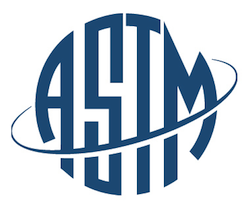 Many in the environmental industry are concerned about the upcoming proposed changes to ASTM E1527-05, the protocol established by the American Society for Testing and Materials (ASTM) to advise environmental professionals on best practices when conducting a Phase I Environmental Site Assessment. The revised standard, E1527-13, is an effort to provide clarity for site designation and add specific metrics absent from the previous standard.
Many in the environmental industry are concerned about the upcoming proposed changes to ASTM E1527-05, the protocol established by the American Society for Testing and Materials (ASTM) to advise environmental professionals on best practices when conducting a Phase I Environmental Site Assessment. The revised standard, E1527-13, is an effort to provide clarity for site designation and add specific metrics absent from the previous standard.
Recognized Environmental Conditions
Among the most significant changes is likely to be how Recognized Environmental Conditions (RECs) are categorized. RECs are the black cat in the path of any environmental professional (EP) trying to complete a Phase I Site Assessment. Any RECs must be thoroughly investigated before an environmental determination can be made. The term Historical Recognized Environmental Condition (HREC) is included in the current standard, but revisions are anticipated that will provide clearer definitions. ASTM is also expected to add Controlled Recognized Environmental Conditions (CREC) as a new designation for sites that are allowed to exist with some level of known and managed RECs.
Additional changes to the Phase I standard
There are a number of other issues ASTM is addressing with this latest revision. Moving forward, EPs may not only be responsible for identifying sites filed with state regulatory agencies, like the TCEQ (Texas Commission on Environmental Quality), but also pulling and reviewing environmental regulatory files from those agencies. Vapor intrusion and vapor migration will likely be required with the new review process. There are also several proposed formatting changes designed to make room for the new values.
Changes for the better?
For many in the environmental data industry, revisions that provide a clearer picture of how to conduct Phase I ESA searches should certainly be welcome. I know that most everyone will applaud the improved definitions for RECs and the addition of vapor intrusion/migration standards. These definitions, more than anything else, are what the industry really needs. The increased file review standards will be an inconvenience for some, but I think they are absolutely necessary moving forward, as almost all recognized sites have special and unique conditions that need to be taken into account.
 Justin Ripple
Justin Ripple
Document Research Services
banks@banksinfo.com

Doubtlessly the agency file reviews will result in better Phase I ESAs. However, one cannot help but wonder whether the banking industry will tolerate the delays and costs. Rarely are file reviews able to be scheduled, much less performed, during the time window many lenders allocate for the ESA process.
Mark, I agree with you completely. A lot of work will need to be done to manage client expectations on file reviews. I have been preparing my network of researchers for the change. We’re typically turning around agency requests in 48-72 hours, when available. Available being the operative word here. Hopefully the change will cause regulatory agencies to increase record availability, I’m not holding my breath though.
Thanks for your comment.
The files still have to be reasonably available so I dont anticipate a major delay associated with the new requirements. What the real issue will be is how the firms that rely heavily on 1099 employees or independent contractors are going to be able to price agency file reviews.
I agree Larry, yet, I have always had a problem with the term “reasonably ascertainable” in the standard. It leaves the door open for a wide range of interpretation.
My concern lies with reasonably ascertainable data. Agencies, specifically fire departments, have found a cash cow in records searches. While I do not think that $10, $20 or $30 per address is that far out of line, I have some Fire Prevention districts that want between $60 and $125 per hour for records searches (with a 1 hour minimum). This makes quite a dent in any profit margin (when Phase I mills have set a bad precedence in cut rate pricing and quick turnaround times with no premium). In addition, there are agencies out there that take the full 30 days for responses to record requests. Until the banks and lawyers realize that a 10 day turnaround does not provide sufficient time to allow a complete report to be compiled, there will continue to be a disparity in the quality of reports, of which the EP’s and their firms will be expected to bear the liability burden for.